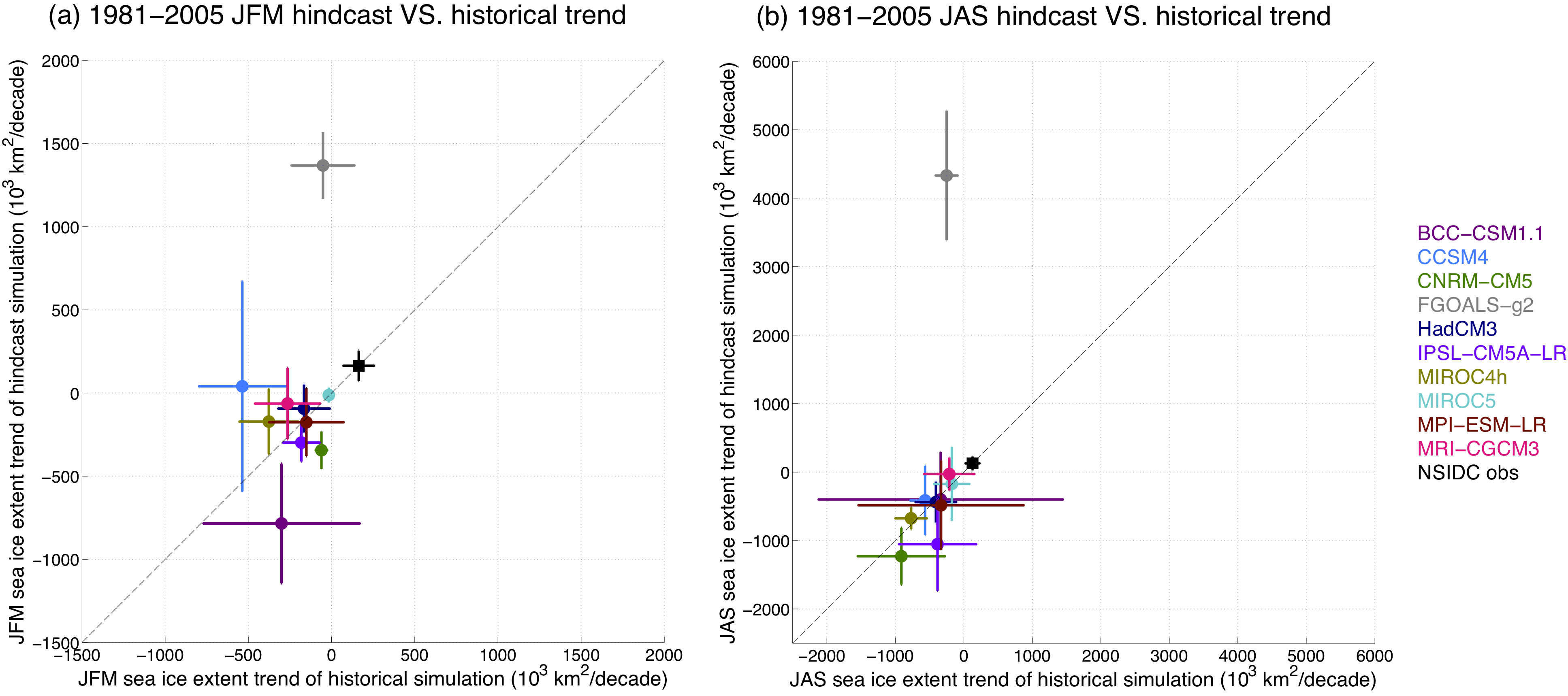Polar climate predictability
![]()
Description
Decadal predictions bridge the gap between seasonal-to-interannual predictions and long-term projections (Meehl et al., 2009). They are thus both an initial conditions and a boundary conditions problem. Models used to perform decadal prediction must therefore be initialised carefully and the external forcing must be taken into account. In order to highlight the methods that could improve the quality and the reliability of decadal predictions, hindcast simulations are generally performed. These are carried out as if they were a forecast, except that they span a past period. This way, we can compare immediately the results of the hindcast to the available observations.
Hindcast simulations performed with general circulation models are usually initialised through simple data assimilation methods (e.g. a nudging). The analysis of the hindcasts performed in the framework of CMIP5 (Coupled Model Intercomparison Project Phase 5) has shown that the initialisation methods currently used do not clearly increase the predictive skill of the models for the Southern Ocean sea ice at decadal time scales.

Hindcast vs. historical Southern Ocean sea ice extent trend for summer (a) and winter (b), computed over the period 1981–2005. The different colours refer to the different models. For each model the dot refers to the ensemble mean of the trends and the horizontal (vertical) bar shows the ensemble mean of the standard deviations of the trends in the historical (hindcast) simulations. Black square is for the trend of the observations (Cavalieri and Parkinson, 2008). The vertical and the horizontal black bars are for the standard deviation of the observed trend which are barely distinguishable due to their small values. Dashed line represents the line y(x) = x. For more details, see Zunz et al. (2013).
Our objective is to check if more sophisticated data assimilation methods can lead to better predictions of the sea ice in the Southern Ocean, comparing the results to the ones obtained with simpler methods. In particular, a particle filter (Dubinkina et al., 2011) and the nudging proposal particle filter (Dubinkina and Goosse, 2013) are tested with LOVECLIM, an Earth-system model of intermediate complexity. Thanks to its low computational cost, large ensemble simulations can be performed within a reasonable time. Decadal prediction simulations are performed through two distinct approaches. On the one hand, we are working in an idealized framework, i.e. a reference simulation, referred to as pseudo-observations, is used instead of actual observations. This allows us to get rid off the incompatibility between the model and the observations. On the other hand, for practical applications, the initialisation methods are also tested in a realistic framework, i.e. through the use of actual observations for both the initialisation and the validation of the hindcasts.
